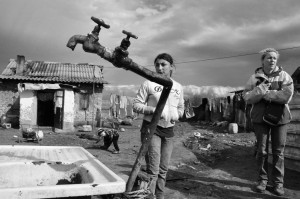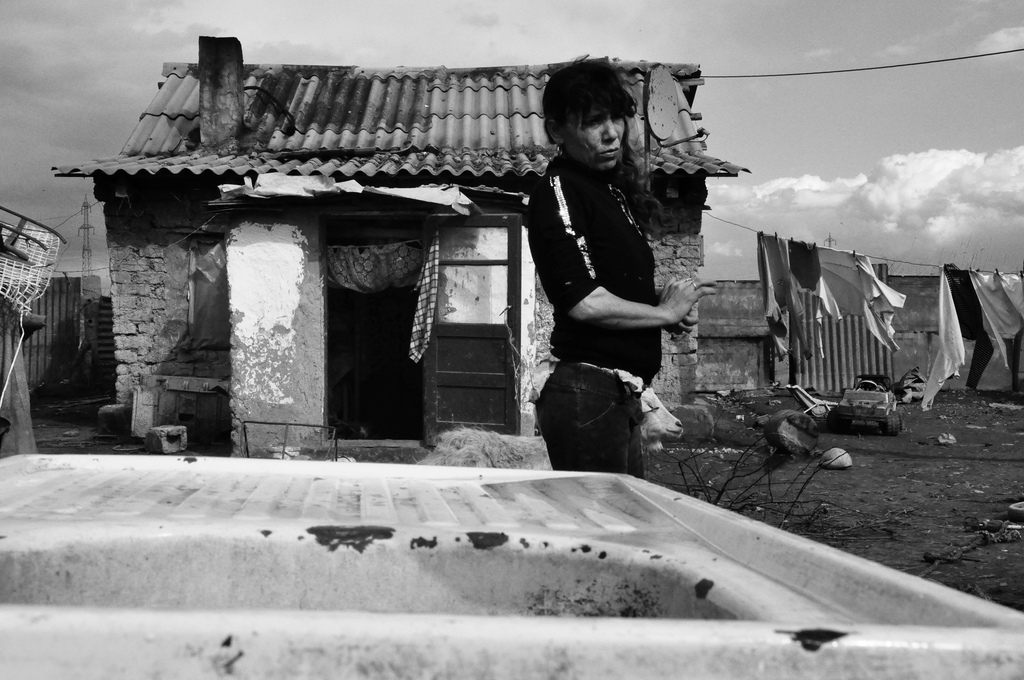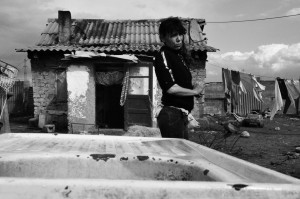To many, the Romani people are shrouded in mystery and prejudices. Some might think of a woman in a long skirt reading the future on your palm. Others may picture beggars and poor people living in caravans when hearing the word “Roma”.
Prejudices seem to stick to the Romani people wherever they go and it seems hard – if not impossible – to figure out the truth about who these people are and why many of them live in severe poverty, isolated from the rest of the society.
Citizens of Malmö, Sweden may remember the Malmö Police shutting down a Roma camp outside the city in the beginning of November 2015.
Shortly before the clearing of the camp, the Romani peoples’ translator, Catalon Mihai, was quoted in the Danish newspaper, Berlingske, saying that the Romas did not want to return to their home country, and that they were “determined to create better conditions for their children in the Swedish welfare state”.
If “better conditions” equal living in a caravan on a polluted industrial site, what kind of life have the Romas left behind in their home countries? Poverty, unemployment and discrimination is what they escape, according to reports from both the Council of Europe and supporting NGO’s.
In fact, the Romani people have faced ruthless and unending discrimination through history.
According to the Austrian database of Roma history and culture, Rombase, the Roma people originally came to Europe from today’s India. They are said to have their origin in the Indian Dom caste, a caste placed very low in the Indian hierarchical system centuries ago.
Historians assume that the Doms had their own small kingdom, which was destroyed by the Gupta Dynasty in the 6th or 7th century. At that time, the Doms lost their power and position and became a lower caste. The Romas seem to have been considered a lower class all the way back to their Indian ancestors.
From India, the Romas came to Iran, Greece and East and Western Europe.
Some historical sources on Rombase refer to the Roma as “terrible looking people” with bad manners, but they were also known as good blacksmiths, musicians and fortunetellers practicing palmistry.
However, many Europeans were skeptical as the Romani people started to arrive in Europe during the Middle Ages.
Racism against the Roma became entrenched in peoples’ minds so deeply that the Roma during World War II also suffered from Hitler’s ethnic cleansing, and where subjected to persecution and deportation to concentration camps. After the war, the Romas did not receive any compensation or help in order to recover from the trauma.
The survivors of persecution during World War II remain in many European countries today.
“Human rights of Roma and Travellers in Europe” report from the Council of Europe, 2012, states that Roma people are being threatened and beaten up in several European countries.
Roma houses have also been set on fire and occasionally the perpetrators have shot the victims trying to escape the flames.
In other countries with less violent incidents, the Council reports about Roma families and groups receiving threats from local non-Romas in order to prevent them from camping in the area.
The threats and violence do not only come from skinheads and neo-Nazi groups. “Normal” non-Roma citizens are also reported to have participated in the attacks.
Apart from the violence, many Romas suffer from poverty and unemployment, often just because of their ethnicity. In a survey carried out by the FRA (European Union Agency for Fundamental Rights) and UNDP (United Nations Development Program) in 2011 at least one quarter of Roma respondents from 11 European countries stated, that they experienced discrimination because of their background in daily life and when looking for jobs.
In Romania, being a Roma is the worst social stigma, according to ERRC (European Roma Rights Center) and many politicians and artists of Roma origin hide or reject their identity to avoid discrimination and the ending of their career.
Incidents like those mentioned above block the road to integration, according to Gabriel Moreno, a Spanish Roma or Gitano, as they call themselves in Spain.
“The society cannot expect the Roma to integrate as if no harm has been done to them,” he argues in the documentary “Romanipen” by Ima Garmendia & Kike del Olmo.
To Gabriel and his family it is normal to be aware of danger. Thereby, he highlights that his and his family’s approach toward the non-Romani Spanish society is shaped by the fear created through the past experiences.
Gabriel Moreno thinks that something needs to be done: “Society has built a stereotype of the Roma that we need to break once and for all, in the same way society is breaking architectural barriers for handicapped people. In the same way we have to work against the barriers of racism.”
On the other hand, Beata Olahova, a Roma social worker from Slovakia, argues that the Roma people also need to take a responsibility themselves.
“Roma in general are not doing enough to change their situation,” she says. She admits, though, that the non-Romani people bear a great deal of the guilt, also: “I do understand it is not an easy task, because for a long time the Roma have been discriminated against. That’s why it is difficult for them to start doing something for themselves and fight for their rights,” she says.
So are the Romani people poor because they are discriminated against or do they make a conscious decision not to be a part of society? 
There seems to be no definitive answer to this problem, but a definitive fact is that something needs to be done, as Europe now has an entire ethnic group living on the edge of society. The crucial question is how Romani and non-Romani allies should stand up for their rights when discrimination, persecution and fear is a major part of their history.
The Romani history is not only one of travelling, but also one of insecurity, suffering, and suspicion from both the surrounding communities and the Romani people themselves. It seems like many Roma people have embraced the identity as Europe’s outcasts, and neither they – nor the surrounding societies – know how to heal the historical wounds that have been bleeding for centuries.
Years of mutual suspicion are hard to break free from, both for the discriminated and those who discriminate.
By Ida Scharla Løjmand
Image credit:
Picture 1: Giusi Barbiani, licensed by CC BY-NC 2.0
Picture 2: Giusi Barbiani, licensed by CC BY-NC 2.0











